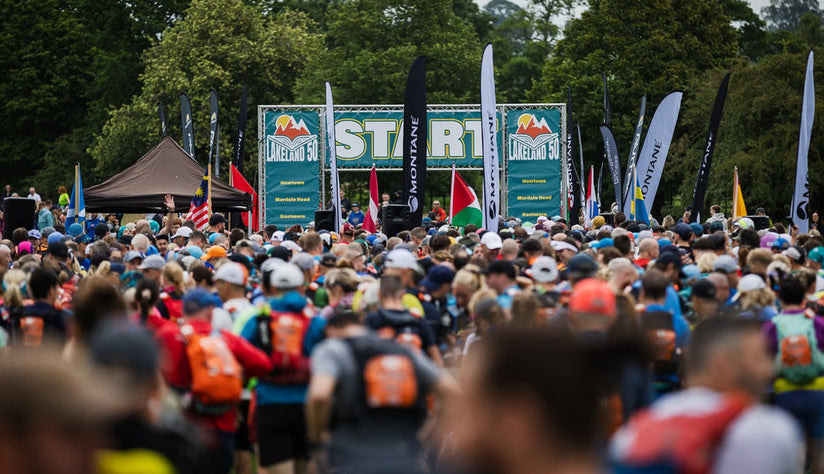Ever wondered what it takes to survive the extreme elements that you’ll find in the coldest places of the world? To find out we asked 2 cold adventure experts, who between them have unrivalled experience of exploring challenging conditions in the depths of winter.
Robert Pollhammer is the founding director of the notoriously challenging Montane Yukon Arctic Ultra, billed as ‘the world’s toughest and coldest ultra’. Whilst Montane athlete Jordan Wylie has taken on several polar adventures, including the Yukon Ultra and, most recently, the Antarctic Ice Marathon.
Here are our intrepid explorers essential winter kit for extremely cold environments…

1. Montane Resolute Down Jacket
Over the last 2 years I have adventured into polar climates on several occasions and one item I would not go without is my Montane Resolute Down Jacket. Down jackets are one of the more expensive parts of any cold weather layering system and typically will last you for a long time if you look after it when not in use. This makes choosing the right one all the more important. Down is an extremely efficient insulator that’s easy to compress into a backpack or stuff stack, which has made it the preferred choice for many adventurers heading out on expeditions into the most remote, hostile and challenging cold environments on the planet.
I put the Montane Resolute Down Jacket through its paces in the Siberian winter and recently tested it on the white continent too. It provides a first class insulation system as the construction is designed to optimise the warmth of the premium 800+ fill power goose down, while allowing the freedom of movement at all times. It’s lightweight, highly breathable and will keep you warm when you need it most, whether that’s at a base camp in the Himalayas or closer to home mountaineering in the Scottish winter.

2. Montane Prism Pants
Pants are probably the Montane product in the range that have remained unchanged the longest. I love that about Montane. The PERTEX® Microlight Mini Rip-stop outer fabric in combination with the 40 g/m² PrimaLoft® SILVER ECO insulation simply work. The features work. Why change a winning team? When you take a break or the weather deteriorates and it quickly gets too cold, you can throw on your Prism Pants. Wind is kept out and even with very wet snow it takes a long time before any moisture makes it through the PrimaLoft® layer. It’s light and it’s got a small packed size and even comes with its own stuff sack. What more can you ask for?
3. Montane Extreme Mitts
If I’m heading on a cold weather expedition like my recent trip to Antarctica, I always ensure I take my Montane Extreme Mitts with me. Extremities such as our fingers are not only one of the most essential parts of our body, they are also highly vulnerable to frostbite too, which can occur in a matter of minutes. I always use Montane Extreme Mitts for outer protection on my hands in cold environments as they have much fewer seams than most gloves in the market. Seams represent weak areas when it comes to insulation and allow heat to escape. So, if you're serious about keeping those fingers and hands warm and dry, then a set of Mitts is an essential packing item for any cold adventure!

4. Montane Punk Balaclava
Whilst taking part in the Montane Yukon Arctic Ultra, I used the Punk Balaclava for the first time and it didn’t disappoint. As we know, a large proportion of our body heat is lost through our head so, once again, this is another essential piece of cold weather kit for climbing, hiking, running or any adventure where you are battling against the cold elements. “The Punk” as I like to call it, provides durable warmth and insulation, with breathability (nose and mouth) and true comfort is considered in the design. I have used it under both an outer shell hood and a helmet too without any issues to report, an absolute must have!
5. A good baselayer
Montane has had the Primino range for a while now. Both in the German Alps and in the Yukon I use the thinner Montane Primino 140 range a lot. I still have mainly the first generation of these baselayers. I have used it for running, hiking, biking and just around town. Washed hundreds of times. And, yes, it is now pilling in some places. However, considering just how much I have worn it - well over 5 years – it is in excellent shape. I am amazed to see that it still works, zero holes with all seams still perfect. It’s not just Marketing that the 25% PrimaLoft® fibres in the product really help with durability. It does work. I do enjoy wearing 100% Merino underwear every now and then, but the wicking of Primino is a lot better and it does dry a lot faster - especially useful when on the move in colder conditions.
6. Eye Protection
People are often surprised when I tell them not to forget their sunglasses when they are heading to extremely cold places, a rookie mistake if there ever was one! The sunlight at high latitudes and altitudes is usually incredibly bright, especially when you consider the pure white reflection off the snow and ice. As with sunburn, don’t be caught out by the temperature or clouds up above. In a recent expedition to Alaska, one of my teammates experienced severe snow blindness which can be very painful and last for days. Protecting your eyes with sunglasses or goggles is crucial for safety. They also provide a great shield from the wind from moving ice and snow in polar climates. Eye protection should always be high up on your list of adventure essentials!

7. Satellite Phone
Whether you’re an adventurer, explorer, hiker or a traveller to a remote location, a satellite phone can help you stay in touch with loved ones or be one of the most important lifelines you will carry should you get into any difficulties pretty much anywhere in the world. There are plenty of different ones on the market but I have opted for the Inmarsat iSatPhone2, which has a very user friendly interface and provides versatility and durability in abundance, even if it is slightly chunkier than others out there. I have first hand experience of using this device in an emergency in the middle of the Indian Ocean and can’t fault it. With the quick release pull out antenna and global coverage, connectivity is almost instant and it also has an emergency SOS function that can be pre-programmed on the front too. There are plenty of others on the market and I would recommend doing some research to check coverage in the area you are heading. As with any kit going with me on an expedition, I live by a very simple mantra that has served me well over the years - “don’t trust it - test it” and the Sat phone is no exception…















